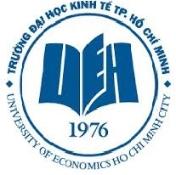News & Events
From Newcastle to Vietnam

Carmen Hubbard, Ankush Prashar, Matt Gorton and Fred Lemke from Newcastle University travelled to Vietnam in February 2017 and spent a fruitful week delivering training to staff and postgraduate students at the University of Economics Ho Chi Minh City, giving presentations to the Institute of Agricultural Science for Southern Vietnam and the Research Institute for Biotechnology and Environment at the Nong Lam University and taking part in research field work in Da Lat, Lam Dong Province. Da Lat is renowned for its vegetables and cut flower production and the visitors were able to meet a range of stakeholders, including researchers, both small-scale and large-scale farmers and representatives from local authorities.
Dr Carmen Hubbard, from Newcastle University’s Centre for Rural Economy said: “We knew how important agriculture is within the Vietnamese economy as a whole -official statistics for 2015 record the industry as providing 17 per cent of the country’s GDP and 47 per cent of total employment - but our visit enabled us to look beyond statistics, and in particular our field visits brought home to us the crucial role agriculture has for Vietnamese people's livelihoods. Agriculture is not only a safety net for surviving but it is a way of living, and Vietnamese farmers were very proud to show and share with us both their achievements and challenges.”
Professor Matt Gorton from Newcastle University Business School added: “Our view is that the application of precision agriculture to production systems is limited by the small size of individual farms, but it may play an important role in terms of breeding and research and development. Regarding standards, commercial producers have to adhere to the domestic third party certification system, VietGAP, to supply supermarkets but there is little pressure to apply the more rigorous, internationally recognised, GlobalGAP requirements. Not applying GlobalDAP may limit opportunities to supply Western markets but is not essential for sales to neighbouring countries, such as Cambodia and Laos so there may be more potential there.”
Last modified: Wed, 12 Apr 2017 10:23:04 BST

